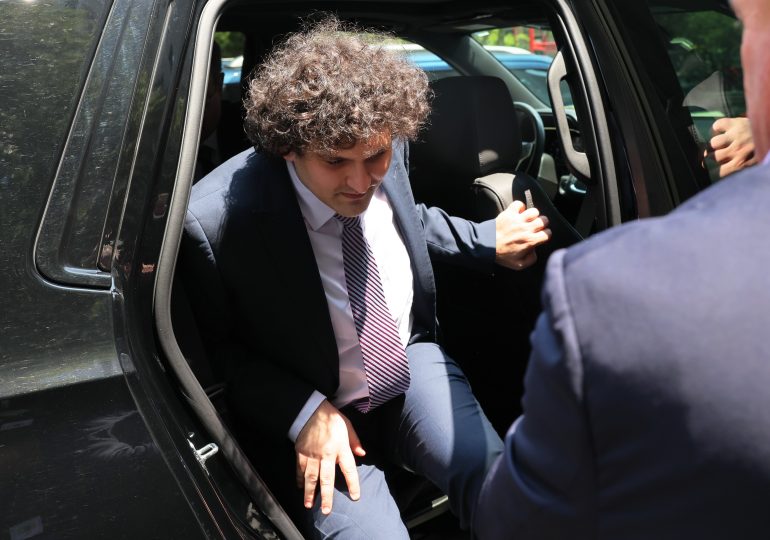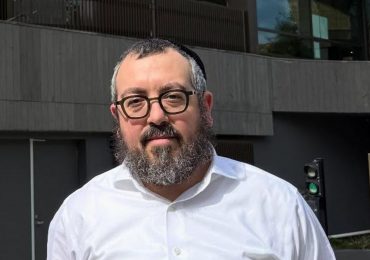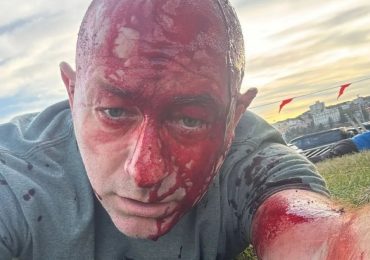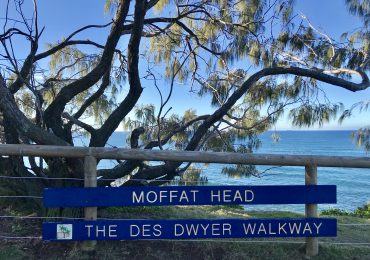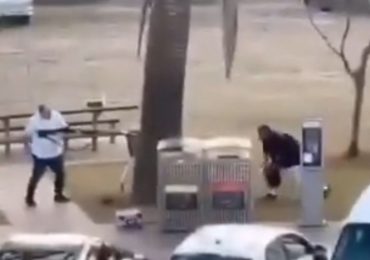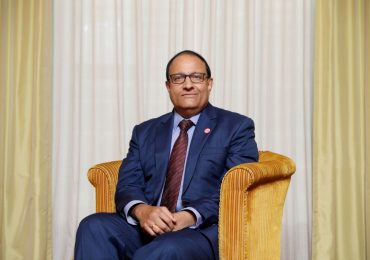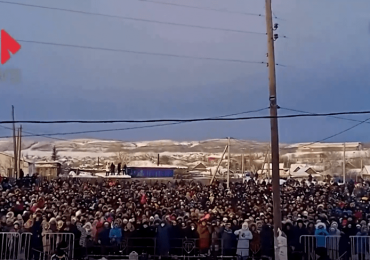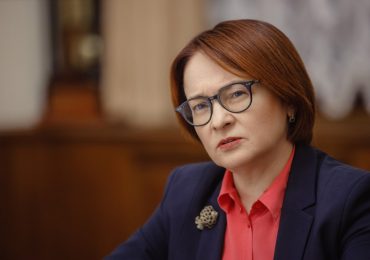From accusations of bribing officials and falsifying financial documents to shadowy political influence campaigns and penthouse confrontations between billionaires: the criminal federal trial of Sam Bankman-Fried has covered an immense amount of ground over the last month. All of these details stemmed out of testimony delivered by three of Bankman-Fried’s former closest collaborators, who allege that he stole more than $8 billion from the customers of his cryptocurrency exchange FTX and directed them to commit fraud.
[time-brightcove not-tgx=”true”]
Bankman-Fried, who voluntarily took the stand for three days, conversely testified that his collaborators made massive mistakes that led to the downfall of FTX and that they had committed crimes without his guidance or knowledge. The defense then rested, and on Nov. 1, both sets of lawyers made their closing arguments. Now, the jury of nine women and three men will decide Sam Bankman-Fried’s fate. If he’s found guilty, Bankman-Fried faces up to 120 years in prison.
With all of the evidence in, here are the biggest bombshell allegations about Sam Bankman-Fried and FTX to emerge from the trial.
Alameda Research had been taking FTX customer deposits for years.
A little less than a year ago, the cryptocurrency exchange FTX collapsed, as its users tried to collectively withdraw billions of dollars but were unable to do so. It was soon revealed that the money had ended up in the coffers of Alameda Research, Bankman-Fried’s trading firm, which made enormous bets on various parts of the crypto ecosystem.
This was nothing new. In fact, FTX co-founder and executive Gary Wang testified that, from FTX’s inception in 2019, customer funds had always flowed straight to bank accounts owned by Alameda, which was then able to do as it pleased with the money. That year, Wang hard-coded an exception into FTX that made Alameda the only user on the exchange allowed to have a negative balance—i.e., to borrow from customer funds. Wang says that Bankman-Fried directed him to create that exception.
This borrowed money was then deployed across the world, alleged Professor Peter Easton, an accounting professor at Notre Dame and expert witness called by the prosecution. During his testimony, Easton displayed analysis that appeared to show that billions of customer funds were taken and reinvested in Bahamian real estate (including the $30 million penthouse Bankman-Fried lived in), crypto startups, and political contributions. (On Oct. 31, however, Bankman-Fried said he didn’t “necessarily agree” with the veracity of the exhibit.)
Bankman-Fried has conceded that Alameda borrowed FTX customer funds—and has stated that he believed Alameda was allowed to do so, as long as its value was net-positive.
When FTX crashed, Bankman-Fried allegedly misled users about the financial state of the company.
On Nov. 7, 2022, Bankman-Fried tried to reassure his customers of his flailing exchange by tweeting out, “FTX is fine. Assets are fine. FTX has enough to cover all client holdings.”
But the previous day, Bankman-Fried had created a Google Doc, which was presented in evidence, in which he wrote that FTX had “enough to process ⅓ of remaining client assets.” And on the morning of Nov. 7, he sent a Signal message to FTX’s inner circle in which he calculated the financial state of the company. While he estimated that FTX could likely scrounge up $3.9 billion worth of assets over the course of a week, he wrote that there would still be a shortfall of $8.1 billion in terms of deliverable customer assets.
Neither Bankman-Fried nor his lawyer addressed the Google Doc or the message thread in court. Instead, Bankman-Fried defended the original Tweet: “My view at the time was that the exchange was okay and that there was no hole in terms of assets.” He has maintained that the issue was about liquidity as opposed to solvency—as in that he had the funds, but not in a way that he could immediately pay out.
Meanwhile, his collaborators testified that FTX had previously given outsiders a misleading view of their finances. Former FTX engineering director Nishad Singh said that at the end of 2021, Bankman-Fried had asked him to create backdated financial statements in order to get the exchange’s yearly revenue over $1 billion. Bankman-Fried denied directing him to backdate documents, but admitted to signing his name to a related contract many months after the contract’s listed date. Bankman-Fried’s lawyer Cohen defended his actions in that instance in his closing argument, saying: “The fact that he signed an agreement that others prepared for him doesn’t move the needle.”
Wang said that FTX lied to the public about the size of its insurance fund, which was designed to protect customers from absorbing losses. Wang alleged that the company used a random number generator to make the insurance fund appear to be bigger than it was, and then published that number on the FTX website.
Caroline Ellison says she warned Bankman-Fried that the company was in trouble months before it crashed.
Bankman-Fried has long maintained that FTX’s collapse came as a complete surprise to him. But former Alameda CEO Caroline Ellison presented several spreadsheets that she had shown to Bankman-Fried over 2021 and 2022, which showed the devastating impact that a crypto crash could have on the company, which she wrote was borrowing billions from FTX. Bankman-Fried appeared to agree: “Yup, and could also get worse,” he commented on the Google Doc.
In the Google Doc, Bankman-Fried asked Ellison how an additional $3 billion in investments might impact Alameda’s financial health. The answer from Ellison’s numbers was clearly bleak—but Bankman-Fried went ahead and started a $2 billion venture fund anyway.
Former executives attacked Bankman-Fried mercilessly.
The top executives of FTX and Alameda Research had once been a tight-knit unit. Bankman-Fried and Ellison dated on and off. Bankman-Fried was on a group chat with Wang and Nishad Singh titled “the fantastic three.” For several months, all four of them shared the $30 million penthouse apartment in the Bahamas.
But Ellison, Singh and Wang all testified against Bankman-Fried under cooperation agreements with the government, and did not hold back in their criticism of FTX or Bankman-Fried. Singh said that by time FTX was on the brink of collapse, he had become suicidal and was feeling extreme guilt about his role in the organization: “I knew that I was becoming party and participating in something heinously criminal.”
Ellison said of Bankman-Fried: “He directed me to commit these crimes.” Wang admitted that he knew the actions he took with the company were wrong and that customers had not agreed for FTX to spend their funds. He added that Bankman-Fried had “said publicly that we would not use customer funds like this.”
Two more secondary players of the drama, FTX software developer Adam Yedidia and general counsel Can Sun also weighed in. “FTX defrauded all of its customers,” Yedidia said outright. (Judge Kaplan told the jury to strike that allegation from their minds.) Sun said he was “shocked” upon learning the special privileges that Alameda had on the platform.
Bankman-Fried does have at least two remaining allies: his parents Barbara Fried and Joe Bankman, who have shown up to the courthouse to support him every day. After Bankman-Fried’s first time on the stand, his father walked over to him to deliver a grin and a thumbs up.
SBF allegedly oversaw a $100 million bribe to the Chinese government.
One moment of the trial that drew audible gasps was when Ellison alleged that Bankman-Fried directed Alameda employees to pay a bribe to Chinese government officials in order to unfreeze $1 billion it had stored on two Chinese crypto exchanges. Bankman-Fried has been charged with foreign bribery related to this alleged incident, although it will be litigated in a separate trial scheduled for next year.
Ellison said that Alameda tried several methods of rescuing the money, including setting up trading accounts in the names of “Thai prostitutes.” After those attempts were unsuccessful, Ellison alleged that Bankman-Fried resorted to bribery—and that then she refused to write about the event directly in internal documents, instead labeling it “the thing.”
FTX’s political influence campaign was highly calculated and robust.
Bankman-Fried is not currently being tried for political finance violations: that charge is also part of next year’s trial. But prosecutors still presented evidence of Bankman-Fried’s attempts to curry favor with regulators and policymakers. They presented a text message from Ryan Salame, an FTX executive who was heavily involved with Bankman-Fried’s political efforts that described their strategy of surreptitiously donating to candidates of both parties: “Sam wants to donate to both [Democratic] and Republican candidates in the US but cause the worlds frankly lost its mind if you [donate] to a democrat no republicans will speak to you…We will be heavily putting money to weed out anti crypto dems for pro crypto dems and anti crypto repubs for pro crypto repubs.”
Singh testified how he reluctantly became the conduit for Bankman-Fried’s political donations to Democratic candidates. Singh alleged that Salame had access to Singh’s Prime Trust bank account and would use it to make millions of dollars of donations in his name, all of which flowed first from FTX customers. Singh himself was barely involved in that decision making, he claimed: “After some point in time, my role was to click a button,” he said.
Bankman-Fried allegedly cultivated an image of himself.
When Bankman-Fried rose to fame in 2021 and 2022, he charmed many people in part thanks to his lack of pretense. Bankman-Fried almost always wore cargo shorts and an FTX t-shirt and rarely cut famously unkempt hair—even when onstage with former world leaders Bill Clinton and Tony Blair.
Ellison contended that this was an act. She testified that Bankman-Fried said his hair “was an important part of FTX’s narrative and image.” She said that he opted not to drive the luxury car given to him by FTX because “it was better for his image to be driving a Toyota Corolla.”
Bankman-Fried denied these characterizations on the stand. He said that he wore a tee and shorts because they were “comfortable,” and that he didn’t cut his hair because he was “kind of busy and lazy.”
His friends said he had a mean streak.
Part of Bankman-Fried’s public image was his affable, earnest demeanor. But during testimony, his closest colleagues attempted to puncture this impression. Ellison told stories of Bankman-Fried angrily confronting her and blaming her for Alameda’s troubles, reducing her to tears.
Singh described in vivid detail a confrontation he had with Bankman-Fried in the fall of 2022, saying: “Sam has some physical tells for when he is thinking hard or is upset. He puffed out his chest…closing his eyes, grinding his teeth or tongue in his mouth. When he opened them to respond, he would sort of glare at me with some intensity.”
When Bankman-Fried took the stand and was questioned by his own lawyer Mark Cohen, he appeared relaxed and jovial. He was much more tense and even petulant when being cross-examined by prosecutor Danielle Sassoon. When confronted with tough questions, Bankman-Fried swayed side to side, furrowed his brow, and scratched his face.
Leave a comment
